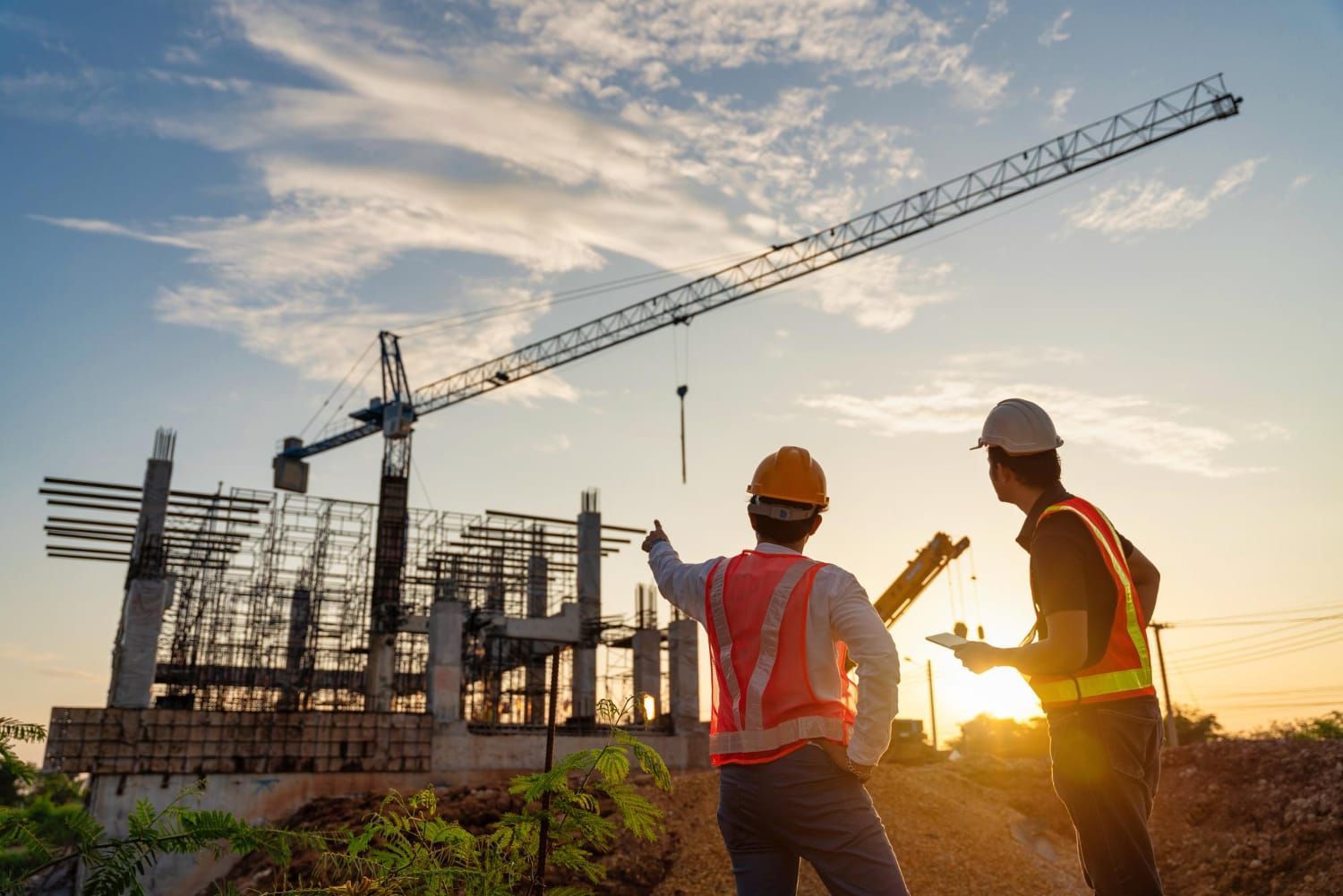HR Resources
HR Consulting for Manufacturing, Mining, and Construction: Real-World Solutions for Small Business Growth
By Christian Hicks
Kindle and Paperback
Are you a small business owner in the manufacturing, mining, or construction industry? Struggling with HR challenges like recruitment, compliance, or employee relations? You’re not alone. In these labor-intensive industries, human resources can be one of the most complex and time-consuming aspects of running a business. Fortunately, there’s a solution: HR consulting.

Browse Our Recent Articles

By Christian Hicks
•
February 12, 2025
Employee turnover in the construction industry is staggering. According to the U.S. Bureau of Labor Statistics , the annual turnover rate in construction hovers around 57% —one of the highest across all industries. If a company were a bar, it would be giving away free drinks for the number of people walking out the door. So why do workers leave? Better pay elsewhere (sometimes, but not always) Unclear career paths ("Is there a promotion after foreman, or do I just get a better parking spot?") Lack of training and development Burnout and safety concerns Retention Strategies That Work Build Career Ladders, Not Just Ladders Most workers don’t want to stay in the same role forever. Companies that map out clear career progression—apprentice → journeyman → foreman → superintendent → project manager—see far less turnover. Invest in Training and Upskilling A 2023 Associated Builders and Contractors report found that for every $1 invested in training, companies saw a $3 return in productivity and retention. Give workers opportunities to grow, and they’ll stay loyal. Create a Culture of Safety and Well-being Unsafe workplaces lead to high turnover. According to the National Safety Council , the cost of work-related injuries in construction exceeds $11.5 billion per year . A strong safety culture doesn’t just save lives—it saves businesses. Retaining employees takes more than hard hats and lunch breaks. Targeted HR Consulting can help you develop career pathing programs, training strategies, and retention plans that keep your best workers on site. Contact us today!

By Christian Hicks
•
February 12, 2025
Construction is tough. It’s physically demanding, high-pressure, and often dangerous. But while hard hats and steel-toed boots protect workers from physical hazards, there’s little protection against mental health struggles. The numbers don’t lie: The construction industry has the highest suicide rate of any profession. The CDC reports that construction workers are four times more likely to die by suicide than the general population. Workplace stress is rampant. A 2023 study by the Construction Industry Alliance for Suicide Prevention (CIASP) found that 83% of construction workers experience stress that affects their work and well-being. Substance abuse is a crisis. According to the National Safety Council , 15% of construction workers struggle with substance use disorders, double the national average. So why is mental health still a taboo topic on most job sites? Breaking the Stigma There’s an old-school mentality in construction that says: “Tough it out. Suck it up. Get back to work.” But this culture is costing lives. Many workers fear that admitting mental health struggles will make them look weak or jeopardize their jobs. Steps Construction Companies Can Take Make Mental Health a Leadership Priority Mental health initiatives can’t just be an afterthought. When leadership openly discusses well-being, employees feel safer seeking help. Provide Anonymous Resources Many workers don’t want to talk about their struggles face-to-face. Offering confidential Employee Assistance Programs (EAPs) can provide critical support without fear of judgment. Train Managers to Spot Warning Signs Supervisors should be trained to recognize signs of distress—like withdrawal, mood swings, or increased absenteeism—and know how to offer support. Create Peer Support Networks Some of the most effective mental health programs come from within. Peer-to-peer mentoring, where workers support each other, has been shown to increase engagement and reduce stigma. Rethink Time-Off Policies Many construction workers avoid taking time off for mental health because they fear losing wages. Flexible leave policies and wellness days can make a difference. Real-World Success Stories Some companies are leading the charge in tackling mental health in construction: Turner Construction launched a company-wide initiative to make mental health part of safety meetings. Skanska implemented a 24/7 mental health helpline for employees and their families. Sundt Construction created a "buddy system" to ensure workers always have someone to talk to. Mental health is just as important as physical safety. If you want to build a culture where workers thrive, Targeted HR Consulting can help you integrate mental health resources into your HR strategy. Contact us today to start making mental well-being a priority in your company.

By Christian Hicks
•
February 11, 2025
Effective communication is the backbone of any successful construction company. With large-scale projects, complex work environments, and a diverse workforce, construction firms must ensure employees understand the company's mission, goals, and safety objectives. Without clear, consistent communication, misunderstandings can lead to project delays, safety hazards, and low employee engagement. The Importance of Communicating Mission, Goals, and Safety Objectives Construction sites are dynamic and constantly evolving, making mission-driven communication critical. A 2023 study by FMI Corporation found that poor communication and inadequate project data account for 48% of all project failures in the construction industry (FMI Corporation, 2023). Furthermore, a survey by PlanGrid and FMI revealed that 52% of rework is caused by miscommunication and inaccurate information (PlanGrid & FMI, 2018). These statistics highlight the financial and operational risks associated with ineffective communication. From a workforce perspective, clear communication fosters trust and engagement. According to Gallup’s State of the American Workplace report, highly engaged teams show 17% higher productivity and 21% greater profitability than those with low engagement levels (Gallup, 2020). Regular updates about the company mission, project goals, and safety expectations help workers feel valued and informed, leading to increased commitment and efficiency. Key Benefits of Communicating Mission, Goals, and Safety Objectives 1. Enhancing Safety and Compliance Safety is a top priority in construction, and miscommunication can lead to serious accidents. The Occupational Safety and Health Administration (OSHA) reports that better safety communication and training could prevent many of the 1,000+ annual construction-related fatalities in the U.S. (OSHA, 2023). Companies that regularly communicate safety protocols experience fewer incidents and reduced downtime. 2. Increasing Employee Engagement and Retention The construction industry faces a labor shortage, making employee retention crucial. A Construction Industry Institute (CII) study found that companies with strong communication practices experienced 30% lower turnover rates than those with weak strategies (CII, 2021). When employees understand the company’s mission and goals, they are more likely to align with the vision and contribute meaningfully. 3. Boosting Productivity and Efficiency Employees who receive regular updates about project goals and expectations can anticipate changes and adjust their work accordingly. A study by McKinsey & Company found that businesses with effective communication practices were 25% more productive than those without (McKinsey & Company, 2022). For construction firms, this translates into meeting deadlines, reducing costly rework, and optimizing labor hours. 4. Strengthening Company Culture and Morale How well leadership communicates its mission and values influences a company's culture. Regular check-ins, clear articulation of project objectives, and transparent leadership help employees connect to the company's mission. According to a report by the Society for Human Resource Management (SHRM), 72% of employees said regular communication from leadership positively impacts workplace morale (SHRM, 2023). A motivated workforce leads to a positive work environment and better performance. Best Practices for Communicating Mission, Goals, and Safety Objectives in Construction 1. Establish a Clear Communication Framework Define the frequency and method of communication for different updates. Regular company-wide meetings, toolbox talks, and daily huddles ensure employees stay informed about mission-driven goals, safety objectives, and project expectations. 2. Utilize Multiple Communication Channels Not all employees absorb information the same way. Use a mix of in-person meetings, digital platforms, emails, bulletin boards, and mobile apps to ensure every worker understands company objectives. 3. Train Leaders to Be Effective Communicators Supervisors and project managers should be trained to relay information clearly. The Harvard Business Review reports that 91% of employees believe their leaders lack proper communication skills (HBR, 2022). Investing in leadership training can bridge this gap and improve company-wide communication. 4. Encourage Two-Way Communication Open dialogue between employees and management is essential. Implementing feedback mechanisms, such as suggestion boxes, surveys, and open-door policies, allows workers to voice concerns and contribute ideas to improve mission alignment. 5. Prioritize In-Person Communication for Clarity and Connection While digital tools enhance efficiency, face-to-face communication remains vital in construction settings. Regular in-person meetings, such as safety briefings and team huddles, ensure messages are clearly understood and allow immediate feedback. Studies show that 55% of communication is non-verbal (Mehrabian, 1971), meaning body language and tone significantly impact understanding. Construction leaders should use in-person interactions to build trust and reinforce company values. Conclusion Clear, consistent communication about the company mission, goals, and safety objectives is key to successful construction workforce management. Employees who understand the company’s vision, feel heard, and receive timely updates are more engaged, productive, and committed to its mission. By implementing strong communication practices, construction firms can improve safety, reduce turnover, boost efficiency, and build a positive workplace culture. As the industry evolves, companies prioritizing mission-driven communication will have a competitive advantage in attracting and retaining top talent while ensuring project success. References: FMI Corporation. (2023). The Impact of Poor Communication in Construction Projects. PlanGrid & FMI. (2018). Construction Disconnected Report. Gallup. (2020). State of the American Workplace Report. OSHA. (2023). Construction Safety and Health Program Statistics. Construction Industry Institute (CII). (2021). Retention Strategies in the Construction Workforce. McKinsey & Company. (2022). Productivity Gains through Effective Communication. SHRM. (2023). Impact of Communication on Workplace Morale. Harvard Business Review (HBR). (2022). Leadership and Communication Effectiveness. Dodge Data & Analytics. (2023). Construction Industry Digital Transformation Survey. Mehrabian, A. (1971). Silent Messages: Implicit Communication of Emotions and Attitudes.
Schedule a Free HR Consultation Today!
Need expert HR support? Scan the QR code or click below to book a free call with our HR consulting team and discover tailored solutions for your business.








